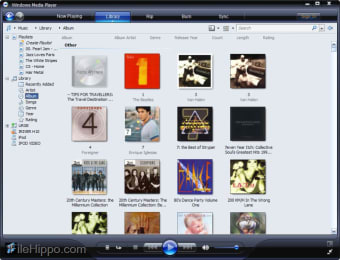The timeless media player
Windows Media Player is a widely used multimedia player that comes pre-installed with every version of the Windows operating system. With its user-friendly interface, you can easily play music and videos without any issues.
Over the years, regular updates have introduced new features, making it a more powerful tool than other similar apps like iTunes for Windows and VLC. With its familiar interface, you can start using this multimedia player right away, making it a great choice for anyone looking for a reliable and efficient media player.
Windows Media Player is still going strong
Presented in 1991 as a defeault player for the Windows operating system, Windows Media Player is still in use in 2023 and has many strengths.
Advertisement
One of the biggest advantages of Windows Media Player is that it comes pre-installed on Windows PCs. This means that you don't have to download or install any additional software to start playing media files. You can simply click on the Windows Media Player icon and start playing your media files right away. This is a major convenience, especially for those who are not tech-savvy and may not want to deal with the hassle of downloading and installing additional software.
Another major advantage of Windows Media Player is its ability to play a wide range of audio and video formats. Whether you have MP3s, WMAs, AVIs, or MP4s, Windows Media Player can handle them all with ease. This means that you don't have to worry about compatibility issues or have to download additional codecs to play your media files. You can simply drag and drop your files into the player and start playing them right away.
The interface of Windows Media Player is also incredibly easy to use. The player's basic controls, such as play, pause, and volume, are prominently displayed and easily accessible. You can also easily navigate through your media library by clicking on the various tabs and menus. This makes it simple to find and play the media you want, even if you have a large collection of files.
Another useful feature of Windows Media Player is its ability to rip CDs to digital files. If you have a large collection of CDs and want to convert them into digital files, Windows Media Player can help you do this quickly and easily. Simply insert a CD into your computer's disc drive, open Windows Media Player, and click on the "Rip" button. The player will then automatically rip the CD to your computer's hard drive, where you can access it at any time.
Finally, Windows Media Player also offers some basic library management features. You can sort your media files by various criteria, such as artist, album, or genre, and create playlists to organize your files even further. This makes it easy to find and play the media you want, and you can also easily share your media files with others by burning them to a CD or transferring them to a portable device.
Has some flaws
While it was once a popular choice for playing audio and video files, some users say it has since fallen behind in terms of features and functionality compared to other media players.
One of the main limitations of WMP is its lack of advanced features. For example, it does not support subtitles, hardware acceleration, or video editing, which are all features that are commonly found in other media players.
Another issue with WMP is its outdated design. The interface looks clunky and dated compared to modern media players, which can make it difficult for users to navigate and find the features they need. Additionally, WMP may not support newer or less common codecs, which can require additional downloads in order to play certain files.
Furthermore, WMP offers limited customization options. Users have fewer options for customizing the look and feel of the player, which can be frustrating for those who want a more personalized media playing experience.
Finally, WMP is no longer actively developed by Microsoft. This means that it might not receive new features or bug fixes, which can leave users with unresolved issues and a lack of support for new technologies.
Can you still get Windows Media Player?
Yes, you can still get Windows Media Player, but it depends on your specific situation.
If you have Windows 10 or earlier, Windows Media Player is included by default. However, it might be hidden or disabled due to updates or other programs. To check if you have it, search for "Windows Media Player" in the Start menu. If it's not listed, you can enable it in the "Turn Windows features on or off" settings.
On the other hand, if you have Windows 11, Windows Media Player is not included by default. However, you can still download it for free from Microsoft's website. This way, you can still enjoy the features and functionality of Windows Media Player on your Windows 11 device.
So what are the Windows Media Player alternatives?
There are many great alternatives to Windows Media Player, each offering unique features and advantages. Here are some popular options to consider, depending on your needs:
- VLC Media Player: The most popular option, known for its incredible format support (playing almost anything you throw at it!), user-friendly interface, and advanced features like subtitle support, hardware acceleration, and video editing
- MPC-HC: Lightweight and powerful, offering high performance, advanced playback controls, and a customizable interface
- PotPlayer: Modern and feature-rich, with codec support, built-in 360° video playback, and a customizable skin
- MediaMonkey: Focuses on music organization, offering a tagging system, playlist creation tools, and automatic library updates
Fallen behind but still gets the job done
Windows Media Player remains a viable option for basic media playback on Windows PCs, offering user-friendliness, pre-installation, and wide format support. However, its lack of advanced features, outdated design, limited customization, and lack of active development by Microsoft make it fall behind modern alternatives.


